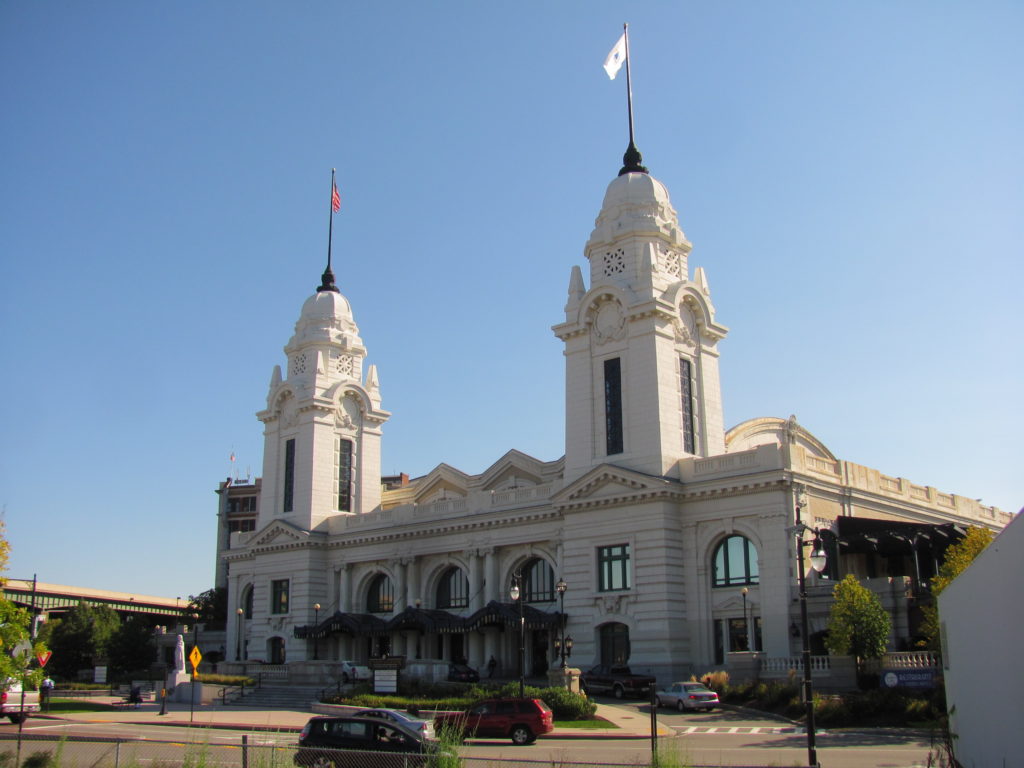Earlier this month, the Massachusetts Cannabis Control Commission published their draft adult use rules (935 CMR 500.000) and draft medical use rules (935 CMR 501.000). There are a few potential energy-related game-changers, whose implications are uncertain, so if you’re motivated please review and comment.
The CCC will hear comments until 5:00 p.m. ET on August 15, 2019 via email (CannabisCommission@State.MA.US; subject = “Draft Regulations:Adult Use of Marijuana” or “Draft Regulations: Medical Use of Marijuana”) or snail mail (Cannabis Control Commission, 101 Federal Street, 13th Floor, Boston, MA 02110; Attention: Public Comments).
CCC will also hold two public hearings:
- August 14, 2019, 10:00 a.m. ET at the Health Policy Commission at 50 Milk Street, 8th Floor Boston, MA 02109
- August 15, 2019, 10:00 a.m. ET at Western New England University School of Law, Moot Court Room 1215, Wilbraham Road, Springfield, MA 01119
In short:
- None of the original energy rules were repealed.
- Energy-related rules for medical growers are effectively identical to adult-use.
- There is no mention of a preferred energy disclosure mechanism.
- Lights must meet the 36 Watt/sqft Lighting Power Density standard or be 10% above DLC standard for photon efficacy.
- Growers need to get a stamp from certified energy expert to demonstrate their facilities are compliant.
- Facilities can be exempt if they get 80% of total energy use from onsite clean or renewable. This includes Combined Heat and Power (CHP). Language is unclear if licenses can purchase RECs to satisfy alternative compliance.
In detail:
- On proving compliance during initial application, 500.103: Licensure and Renewal 935; (1) Provisional License:
- (b) “To demonstrate compliance with 935 CMR 500.120(11), a Marijuana Cultivator applicant must also submit an energy compliance letter prepared by a Massachusetts Licensed Professional Engineer or Massachusetts Licensed Registered Architect with supporting documentation. For a Microbusiness or Craft Marijuana Cooperative with a cultivation location sized as Tier 1 or Tier 2, compliance with any of the requirements of 935 CMR 500.120(11) may be demonstrated through an energy compliance letter prepared by one or more of the following energy professionals:
- A Certified Energy Auditor certified by the Association of Energy Engineers;
- A Certified Energy Manager certified by the Association of Energy Engineers;
- A Massachusetts Licensed Professional Engineer; or
- A Massachusetts Licensed Registered Architect
- (f) To the extent updates are required to the information provided for initial licensure, the Marijuana Cultivator must submit an updated energy compliance letter prepared by a Massachusetts Licensed Professional Engineer or Massachusetts Licensed Registered Architect with supporting documentation, together with a renewal application submitted under 935 CMR 500.103(4).
- (b) “To demonstrate compliance with 935 CMR 500.120(11), a Marijuana Cultivator applicant must also submit an energy compliance letter prepared by a Massachusetts Licensed Professional Engineer or Massachusetts Licensed Registered Architect with supporting documentation. For a Microbusiness or Craft Marijuana Cooperative with a cultivation location sized as Tier 1 or Tier 2, compliance with any of the requirements of 935 CMR 500.120(11) may be demonstrated through an energy compliance letter prepared by one or more of the following energy professionals:
- On proving compliance during renewal application, 500.103: Licensure and Renewal 935;(4) Expiration and Renewal of Licensure.
- (c) A Marijuana Cultivator engaged in indoor cultivation must include a report of the Marijuana Cultivator’s energy and water usage over the 12-month period preceding the date of the application.
- (d) To the extent updates are required to the information provided for initial licensure, the Marijuana Cultivator must submit an updated energy compliance letter prepared by a Massachusetts Licensed Professional Engineer or Massachusetts Licensed Registered Architect with supporting documentation, together with a renewal application submitted under 935 CMR 500.103(4).
- New language for minimum energy efficiency and equipment standards, under 500.120:Additional Operational Requirements for Indoor and Outdoor Marijuana Cultivators (11).
- On energy disclosure: “Each license renewal application under 935 CMR 500.103(4) must include a report of the Marijuana Cultivator’s energy and water usage over the 12-month period preceding the date of application.”
- On exempting greenhouses from building envelope rules. (a): The building envelope for all facilities, except Greenhouses, must meet minimum Massachusetts Building Code requirements and all Massachusetts amendments
- On lighting: (b) Lighting used for Cannabis Cultivation must meet one of the following compliance requirements:
- Horticulture Lighting Power Density must not exceed 36 watts per square foot, except for Tier 1 and Tier 2 which must not exceed 50 watts per square foot;or
- All horticultural lighting used in a facility is listed on the current Design Lights Consortium Solid-State Horticultural Lighting Qualified Products List (“Horticultural QPL”) or other similar list approved by the Commission as of the date of license application, and lighting Photosynthetic Photon Efficacy (PPE) is at least 15 percent above the minimum Horticultural QPL threshold rounded up to the nearest 0.1 μmol/J (micromoles per joule).
- On HVAC: (c) Heating Ventilation and Air Condition (HVAC) and dehumidification systems must meet Massachusetts Building Code requirements and all Massachusetts amendments (780 CMR State Building Code), IECC SectionC.403 or ASHRAE Chapter 6 as applied or incorporated by reference in (780 CMR: State Building Code). As part of the documentation required under 935 CMR 500.120(11)(b), a Marijuana Cultivator must provide a certification from a Massachusetts Licensed Mechanical Engineer that the HVAC and dehumidification systems meet Massachusetts building code as specified in this 935 CMR 500.120(11)(c) and that such systems have been evaluated and sized for the anticipated loads of the facility.
- On exemptions to energy efficiency rules: (e) Requirements in 935CMR 500.120(11)(b) and (c) shall not be required if an indoor Marijuana Cultivator is generating 80% or more of the total annual onsite energy use for all fuels (expressed on a MWh basis) from an onsite clean or renewable generating source, as defined by M.G.L. c. 25A § 11F, and/or alternative energy generating source, as defined by M.G.L. c. 25A § 11F ½. Additionally, the Marijuana Establishment must document that renewable energy credits or alternative energy credits representing the portion of the Licensee’s energy usage not generated onside (sic) has been purchased and retired on an annual basis.
- NOTE: M.G.L. c. 25A § 11F ½ includes combined heat and power as an alternative energy generating source. M.G.L. c. 25A § 11F defines the typical suite of renewable generating sources.
- NOTE: It’s not clear if the word “onsite” is intended to qualify just “clean” or if it also qualifies “renewable” generating sources. Surely it qualifies both. But strangely, the proposed language references renewable or alternative energy credits from offsite sources, which suggests that growers can purchase Massachusetts Class I RECs to meet the standard. Clarification needed.
- On demonstrating compliance with certified letters: (f) Prior to final licensure, a Marijuana Cultivator Licensee must demonstrate compliance with 935 CMR 500.120(11), by submitting an energy compliance letter prepared by a Massachusetts Licensed Professional Engineer or Massachusetts Licensed Registered Architect with supporting documentation, together with submission of building plans under 935 CMR 500.103(1) For a Microbusiness or Craft Marijuana Cooperative with a cultivation location sized as Tier 1 or Tier 2, or such other Marijuana Cultivator meeting the requirements of 935 CMR 500.050(1), compliance with any of the requirements of 935 CMR 500.120(11)may be demonstrated through an energy compliance letter or updated energy compliance letter prepared by one or more of the following energy professionals:
- A Certified Energy Auditor certified by the Association of Energy Engineers;
- A Certified Energy Manager certified by the Association of Energy Engineers;
- A Massachusetts Licensed Professional Engineer;or
- A Massachusetts Licensed Registered Architect
- On definitions (including calculating LPD): (h) For purposes of 935 CMR 500.120(11), the following terms shall have the following meanings:
- Horticultural Lighting Equipment (HLE) means any lighting equipment (e.g. fixtures,bulbs, ballasts, controls, etc.) that uses energy for the cultivation of plants, at any stage of growth (e.g. germination cloning/mother plants, Propagation, Vegetation, Flowering, and harvest).
- Horticulture Lighting Square Footage (HLSF) means Canopy, plus any additional areas(s)that will contain live plants at any point in time that will be exposed to horticultural lighting equipment.
- Lighting Power Density (HLPD) means a measure of total watts of Horticultural Lighting Equipment per total Horticulture Lighting Square Footage, (HLE / HLSF = HLPD) expressed as number of watts per square foot.
- NOTE also that “Canopy means an area to be calculated in square feet and measured using clearly identifiable boundaries of all areas(s) that will contain mature plants at any point in time, including all of the space(s) within the boundaries, Canopy may be noncontiguous, but each unique area included in the total Canopy Calculations shall be separated by an identifiable boundary which include, but are not limited to: interior walls, shelves, Greenhouse walls, hoop house walls, garden benches, hedge rows, fencing, garden beds, or garden plots. If mature plants are being cultivated using a shelving system, the surface area of each level shall be included in the total Canopy calculation.
This piece also appeared as a LinkedIn Pulse article.

